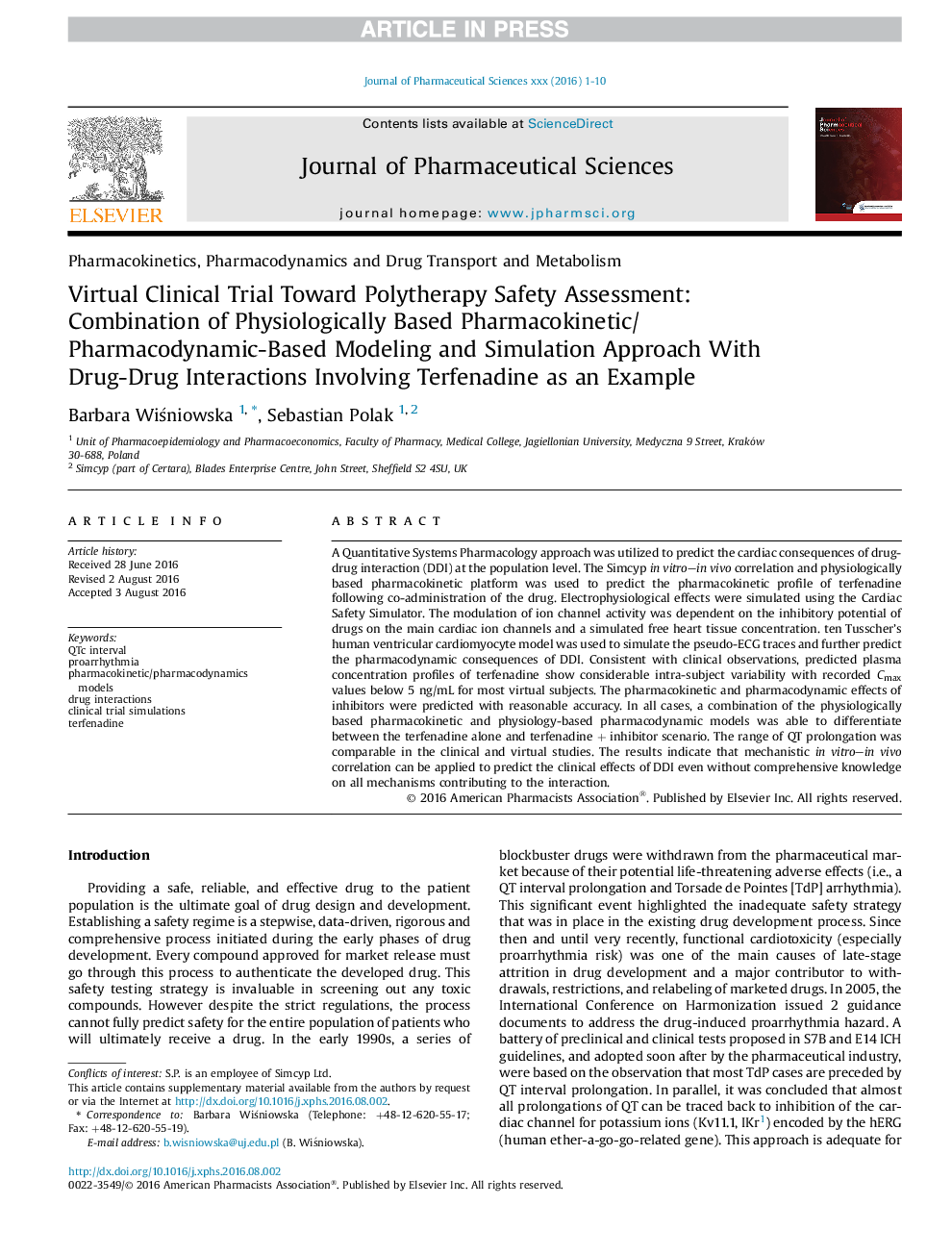| Article ID | Journal | Published Year | Pages | File Type |
|---|---|---|---|---|
| 8514784 | Journal of Pharmaceutical Sciences | 2016 | 10 Pages |
Abstract
A Quantitative Systems Pharmacology approach was utilized to predict the cardiac consequences of drug-drug interaction (DDI) at the population level. The Simcyp in vitro-in vivo correlation and physiologically based pharmacokinetic platform was used to predict the pharmacokinetic profile of terfenadine following co-administration of the drug. Electrophysiological effects were simulated using the Cardiac Safety Simulator. The modulation of ion channel activity was dependent on the inhibitory potential of drugs on the main cardiac ion channels and a simulated free heart tissue concentration. ten Tusscher's human ventricular cardiomyocyte model was used to simulate the pseudo-ECG traces and further predict the pharmacodynamic consequences of DDI. Consistent with clinical observations, predicted plasma concentration profiles of terfenadine show considerable intra-subject variability with recorded Cmax values below 5 ng/mL for most virtual subjects. The pharmacokinetic and pharmacodynamic effects of inhibitors were predicted with reasonable accuracy. In all cases, a combination of the physiologically based pharmacokinetic and physiology-based pharmacodynamic models was able to differentiate between the terfenadine alone and terfenadine + inhibitor scenario. The range of QT prolongation was comparable in the clinical and virtual studies. The results indicate that mechanistic in vitro-in vivo correlation can be applied to predict the clinical effects of DDI even without comprehensive knowledge on all mechanisms contributing to the interaction.
Related Topics
Health Sciences
Pharmacology, Toxicology and Pharmaceutical Science
Drug Discovery
Authors
Barbara WiÅniowska, Sebastian Polak,
